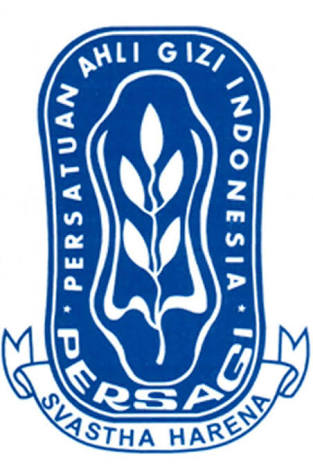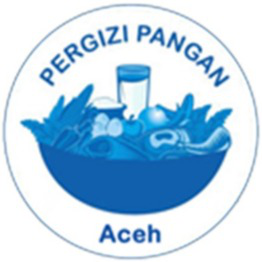Analysis of Oil Palm Farmer Households Food Security and Nutrition Based on the Share of Food Expenditures and Energy Consumption
Abstract
Full Text:
PDFReferences
Aisy, A. M., Haryono, D., & Ismono, R. H. (2022). Ketahanan Pangan Rumah Tangga Petani Kelapa Sawit Swadaya Di Kabupaten Tulang Bawang. JIIA (Jurnal Ilmu-Ilmu Agribisnis), 10(2), 237-244.
Ariani, M., Suryana, A., Suhartini, S. H., & Saliem, H. P. (2018). Keragaan konsumsi pangan hewani berdasarkan wilayah dan pendapatan di tingkat rumah tangga.
Arida, A., Sofyan, S., & Fadhiela, K. (2015). Analisis ketahanan pangan rumah tangga berdasarkan proporsi pengeluaran pangan dan konsumsi energi (studi kasus pada rumah tangga petani peserta program desa mandiri pangan di Kecamatan Indrapuri Kabupaten Aceh Besar). Jurnal Agrisep, 16(1), 20-34.
BKP. (2019). Panduan Analisis Sistem Kewaspadaan Pangan dan Gizi (SKPG). Badan Ketahanan Pangan Kementerian Pertanian, Jakarta.
Erlyna Wida Riptanti, Masyhuri Masyhuri, Irham Irham and Any Suryantini. (2019). The ability of dryland farmer households in achieving food security in food-insecure area of East Nusa Tenggara, Indonesia. AIMS Agriculture and Food, 5 (1). DOI: 10.3934/agrfood.2020.1.30.
Faoeza Hafiz Saragih, Dwidjono Hadi Darwanto, Masyhuri. (2013). Analisis Daya Saing Ekspor Minyak Kelapa Sawit (CPO) Sumatera Utara di Indonesia. Jurnal Agro Ekonomi, 24 (1).
Hilda Aprina. (2014). Analisis Pengaruh Harga Crude Palm Oil (CPO) Dunia Terhadap Nilai Tukar Riil Rupiah. Buletin Ekonomi Moneter dan Perbankan, 16 (4).
Jonsson, U., & Toole, D. (1991). Household food security and nutrition: A conceptual analysis. New York: United Nations Children’s Fund.
Jonsson, U., & Toole, D. (1991). Conceptual analysis of resources and resource control in relation to malnutrition, disease and mortality. New York: UNICEF.
The Law Number 18 of 2012 concerning Food.
M. A. Rachmah, Mukson, S. Marzuki. (2017). Analysis of Factors Affecting The Share of Food Expenditure Household of Farmers in Subdistrict Suruh Semarang Region. Jurnal Pangan dan Gizi, 7 (1).
M. Faiz Syuaib. (2016). Sustainable agriculture in Indonesia: Facts and challenges to keep growing in harmony with environment. Agricultural Engineering International: CIGR Journal, 18 (2).
Malik, A., Wibisono, Y., & Iskandar, R. (2019). Analisis Ketahanan Pangan Kabupaten Jember. In Seminar Nasional Multi Disiplin Ilmu Universitas Asahan.
Maxwell, D. (Ed.). (2000). Urban livelihoods and food and nutrition security in Greater Accra, Ghana (Vol. 112). Intl Food Policy Res Inst.
Maxwell, D., & Caldwell, R. (2008). The Coping Strategies Index: A tool for rapid measurement of household food security and the impact of food aid programs in humanitarian emergencies. Field methods manual, 2.
Maxwell, D., Watkins, B., Wheeler, R., & Collins, G. (2003). The coping strategies index: A tool for rapidly measuring food security and the impact of food aid programs in emergencies. Nairobi: CARE Eastern and Central Africa Regional Management Unit and the World Food Programme Vulnerability Assessment and Mapping Unit.
Mulyo J.H., Sugiyarto, dan Widada, A. W. (2015). Ketahanan Pangan Rumah Tangga Tani Daerah Marginal di Kabupaten Bojonegoro. Jurnal Agro Ekonomi Vol. 26/ No. 2 : 121-123. Yogyakarta : UGM.
Peraturan Menteri Kesehatan Republik Indonesia Nomor 28 Tahun (2019). Tentang Angka Kecukupan Gizi Yang Dianjurkan Untuk Masyarakat Indonesia.
Widiati, S., & Rusmana, M. (2020). Peran Sistem Pertanian Lokal Dalam Mekanisme Pemenuhan Kebutuhan Pangan (Food Coping Strategy) Masyarakat Adat Kasepuhan Cicarucub Berbasis Kearifan Lokal. Jurnal Agribisnis Terpadu, 13(1), 134-153.
DOI: https://doi.org/10.35308/jns.v4i1.7647
Refbacks
- There are currently no refbacks.
Managed by Department of Nutrition, Faculty of Public Health
Published by Universitas Teuku Umar ,
Website: http://jurnal.utu.ac.id/JNS/index
Email: jns@utu.ac.id
Phone/Fax: +62-852-7736-5563; E-mail:
This work is licensed under a Creative Commons Attribution-ShareAlike 4.0 International License.














